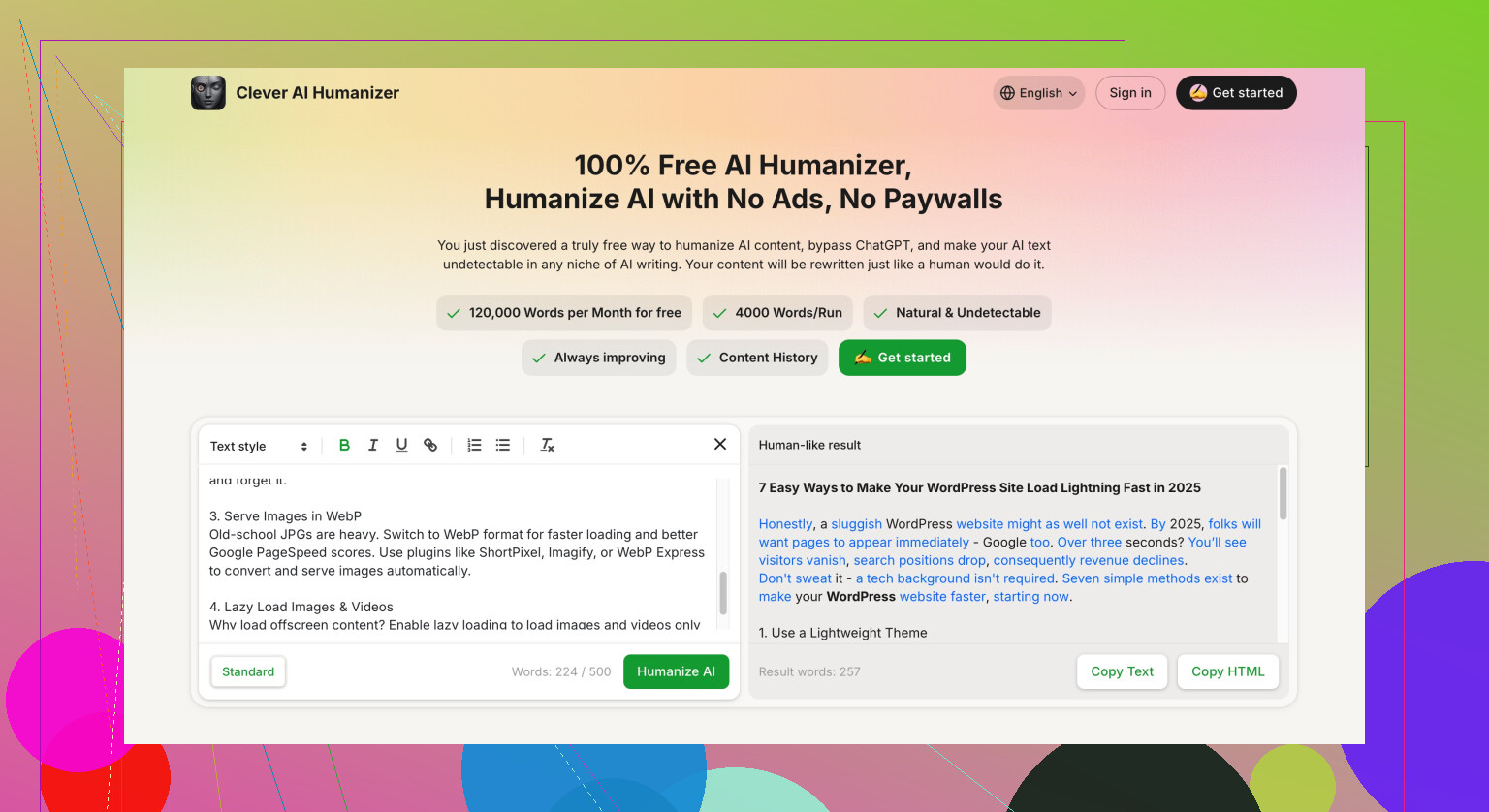I used an essay writer tool powered by AI and the results felt robotic and unnatural. I need advice or tips on how to humanize AI-generated essays so they read more like something a real person would write. Looking for the best ways to edit or tweak the text to improve readability and authenticity.
Been there, done that—AI essays can totally sound stiff and “off,” right? To make those machine-written chunks less obvious, first, you wanna chop up those long, perfect sentences. Real people don’t talk like textbooks. Throw in some contractions (can’t, won’t, it’s), and drop in expressions or reactions, even a rhetorical question or two—basically, sound more like you’re explaining it to a friend. Remember, nobody drops that many transition words like “furthermore” and “in conclusion” in actual conversation, so mix it up!
Don’t forget, humans make (tiny) errors, so one or two typos or casual phrases actually helps. Change up the sentence length so it’s not uniform, and throw in an anecdote or opinion if that fits. Reading it out loud can point out the robotic spots—if it sounds weird, it probably is.
Then, for an extra boost, check tools that basically specialize in this, like the Clever Ai Humanizer. This tool’s handy for making AI-generated stuff sound way more human, even fixing the awkwardness and boosting originality. You can find out more by visiting transforming robotic text into authentic writing. Worth a shot if you want that essay to fly under the radar—just remember to give it a last once-over so it fits your own voice!
Honestly, I get what @nachtschatten is saying and those are helpful points, but there’s one thing most folks ignore: the reasoning. AI essays aren’t just “robotic” because of the tone or sentence structure—they usually lack a real human thought process. It’s all very formulaic.
Try this: After generating your essay, read each paragraph and ask “So what?” or “Why does this matter?” If the answer isn’t obvious, toss in a line or two making an original connection to your own views or a weird fact you once heard. Even being a little off-topic now and then makes it seem more real. Throw in pop culture references or a current event, which most AIs will avoid unless you prompt them specifically.
Also, don’t be afraid to disagree with the AI’s bland neutrality. Take a (mildly) controversial stance or highlight a gray area—AI loves clear-cut answers, but real people know it’s never that simple.
And let’s not pretend we always have perfectly sourced information at our fingertips. Cite a source or memory vaguely (“I remember reading somewhere…” or “Based on what teachers usually say…”).
About tools: I see the Clever Ai Humanizer is getting more buzz now, not just for fixing tone but also for shuffling things up on a conceptual level (though, yeah, always double-check that your voice still comes through). But honestly, overhumanizing isn’t great either—sometimes the best fix is just to go in and add a funky metaphor or quirky observation.
For anyone hunting deeper into AI humanizers or just curious which ones are worth your time, here’s an updated guide that’ll help you sort out which free AI humanizer tools are actually worth the click: discover top free AI humanizing tools to level up your writing.
Bottom line: Don’t just copy-edit—inject a little of yourself, even if it’s messy or opinionated. That’s the secret sauce no AI can fake yet.
